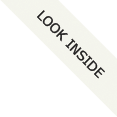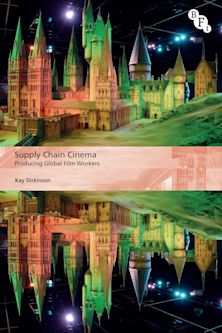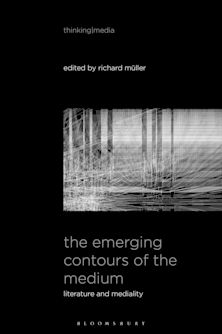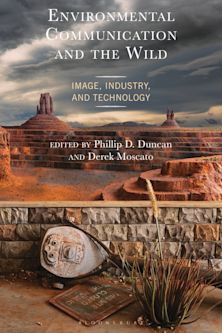- Home
- ACADEMIC
- Film & Media
- Film and Media Studies - Other
- Communication in U.S. Elections
Communication in U.S. Elections
New Agendas
Roderick P. Hart (Anthology Editor) , Daron R. Shaw (Anthology Editor) , Scott L. Althaus (Contributor) , Mark Hetherington (Contributor) , Sharon Jarvis (Contributor) , Robert Klotz (Contributor) , Daniel Lipinski (Contributor) , Glenn Richardson (Contributor) , Dietram Scheufele (Contributor) , Dhavan Shah (Contributor) , Daron R. Shaw (Contributor) , Adam Simon (Contributor) , Nick Valentino (Contributor) , Lynn Vavreck (Contributor)
- Textbook
Communication in U.S. Elections
New Agendas
Roderick P. Hart (Anthology Editor) , Daron R. Shaw (Anthology Editor) , Scott L. Althaus (Contributor) , Mark Hetherington (Contributor) , Sharon Jarvis (Contributor) , Robert Klotz (Contributor) , Daniel Lipinski (Contributor) , Glenn Richardson (Contributor) , Dietram Scheufele (Contributor) , Dhavan Shah (Contributor) , Daron R. Shaw (Contributor) , Adam Simon (Contributor) , Nick Valentino (Contributor) , Lynn Vavreck (Contributor)
- Textbook
Buy from Bloomsbury eTextBooks
You are now leaving the Bloomsbury Publishing website. Your eBook purchase will be with our partner https://www.vitalsource.com.
Your credit card statement will show this purchase originating from VitalSource Technologies. They will also provide any technical assistance you might require.
You must sign in to add this item to your wishlist. Please sign in or create an account
Description
Over the past thirty-five years, the rapid development of communication technology, the decline of political parties, a growing culture of cynicism, and the rise of the Internet have all affected U.S. political campaigns. But while these forces seem powerful, little scientific evidence has been gathered of their impact. Communication in U.S. Elections presents work from some of the best young scholars in two disciplines_communication and political science_on how modern election campaigns are affected by such forces. The authors look at how voters acquire political information, how issues are OframedO for them by the mass media, how attitudes about social groups are created, and how political advertising uses popular culture to affect voting patterns. The result is a fresh and comprehensive overview of why modern political campaigns turn out as they do.
Table of Contents
Part 2 Part I: Informing the Modern Electorate
Chapter 3 Democracy for Some? How Political Talk Informs and Polarizes the Electorate
Chapter 4 Who's Voted in When the People Tune Out? Information Effects in Congressional Elections
Part 5 Part II: Media Frames in Contemporary Campaigns
Chapter 6 The Collision of Convictions: Value-Framing and Value Judgments
Chapter 7 A Unified Method for Analyzing Media Framing
Part 8 Part III: Interpersonal Judgments and Electoral Outcomes
Chapter 9 Voter Uncertainty and Candidate Contact: New Influences on Voting Behavior
Chapter 10 Declining Trust and a Shrinking Policy Agenda: Why Media Scholars Should Care
Part 11 Part IV: U.S. Campaigns and Group Identities
Chapter 12 Imagining Political Parties: A Constructionist Approach
Chapter 13 The Mass Media and Group Priming in American Elections
Part 14 Part V: New Modes of Campaign Influence
Chapter 15 The Outside Game: Congressional Communication and Party Strategy
Chapter 16 Internet Politics: A Survey of Practices
Chapter 17 Political Advertising and Popular Culture in the Televisual Age
Product details
| Published | 15 Jul 2002 |
|---|---|
| Format | Ebook (Epub & Mobi) |
| Edition | 1st |
| Extent | 264 |
| ISBN | 9780585385242 |
| Imprint | Rowman & Littlefield Publishers |
| Publisher | Bloomsbury Publishing |
About the contributors
Reviews
-
This book lives up to its promise of establishing new agendas for research in the rapidly-growing field of political communication and elections. Impressive in its scope, vision, and intellectual excitement, this is an important source for all scholars of elections and democracy.
W Lance Bennett, University of Washington


































